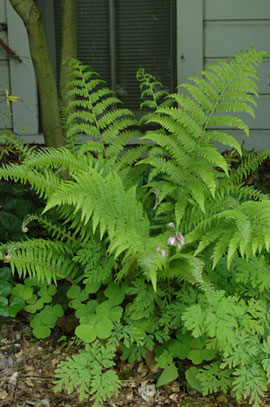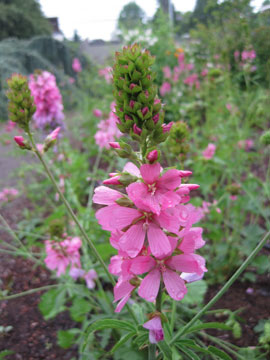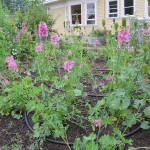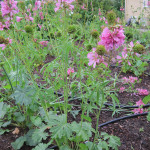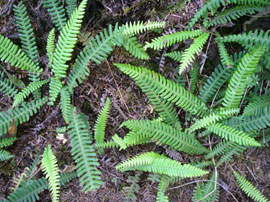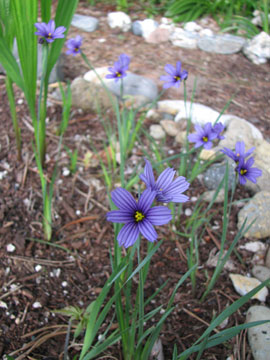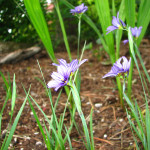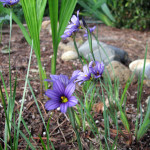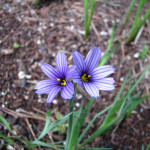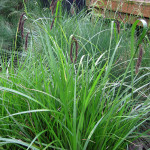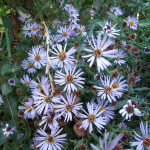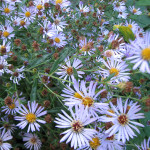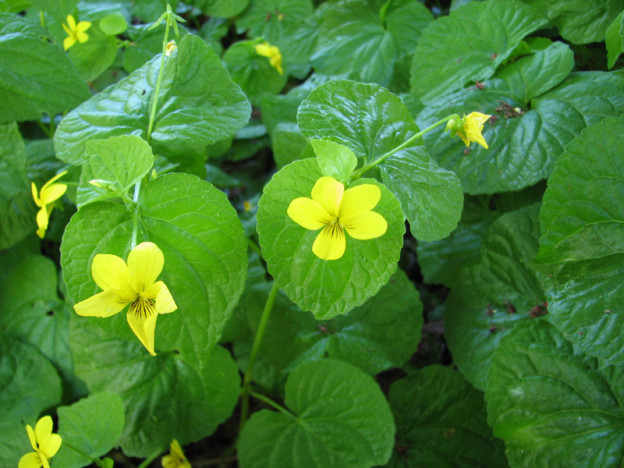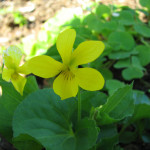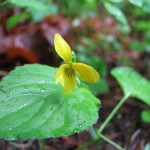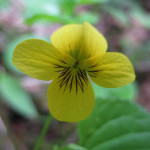Carex Obnupta
Slough sedge is native to western North America from British Columbia to California where it grows in wetland habitats. The plant produces upright, angled stems approaching 1.2 meters in maximum height, growing in beds or colonies from rhizome networks. The inflorescence is a cluster of flower spikes accompanied by a long leaflike bract.
Wildlife
The lens-shaped seeds are eaten by many kinds of wildlife. Birds known to eat sedge seeds include coots, ducks, marsh birds, shorebirds, upland game birds, and songbirds. In addition to providing food for many wildlife species, sedges are also valuable for cover. Frequently they provide nesting cover for ducks, and their tufted growth furnishes concealment and bedding for other animals. Beavers, otters, muskrats and minks make their way through the sedges as they go to and from the water.
Ethnobotanic
The leaves of slough sedge are used for both wrapping and twining in the grass baskets that are well known and widely marketed by Nitinaht and Nootka women even today.
The Nitinaht believed that picking grasses such as slough sedge for baskets and mats causes fog. The fisherman were always getting annoyed with the women who harvested these materials, because they were always making it foggy. It is said that Hesaquiat men shaved with this grass because the edges are so sharp. There is a saying in Hesaquiat which translates as “you’re just like citapt (slough sedge)” – you never change, because slough sedge is always the same and never seems to change in appearance.
Erosion Control
Slough sedge provides erosion control and streambank stabilization. The dense swards of slough sedge provide sediment retention and nutrient uptake, thus contributing to water quality improvement. Emergent wetland plant communities dominated by slough sedge provide the following hydrologic functions: maintaining river or stream meander patterns; providing a broad, shallow plain where streams slow and sediment deposition occurs; stormwater abatement; a mixing zone where brackish and freshwaters meet; and nutrient-rich habitat for aquatic organisms, fish, waterfowl, and predators such as otter, bald eagles, herons, and raccoons to feed.
- Light Requirements: Full Sun, Part sun
- Water Requirements: Perennially Wet
- Ease of Growing: Easy to grow
- Growth Rate: Moderate
- Spreads:
- Wildlife Support: Birds or Mammals
- Fire-resistant: No
- Edible: No
- Mature Height: 2ft
- Mature Width:1ft
Aster subspicatus
Douglas Aster is a tall spreading perennial that blooms into the late summer and thrives on saltwater shorelines. The rather lanky stems are topped with bluish purple flowers that look like miniature daisies (ray flowers). The prolific blooms will draw lots of butterflies.
- Light Requirements: Full Sun
- Water Requirements: Moist
- Ease of Growing: Easy to grow
- Growth Rate: Fast
- Spreads: Yes
- Wildlife Support: Pollinators, Hummingbirds, Pest-eating Insects, Birds or Mammals
- Fire-resistant: No
- Edible:
- Mature Height: 1-4ft
- Mature Width:2ft
Delphinium trollifolium
This wildflower reaches one half to just over one meter in height. It has large, shiny, deeply lobed leaves. The top half of the stem is an inflorescence of widely spaced flowers on long pedicels, the longest over nine centimeters long. The flowers are usually deep brilliant blue. The upper two petals may be milky white. The spur exceeds two centimeters in length in the largest of the flowers. This plant is toxic.
- Light Requirements: Part Shade, Full Shade
- Water Requirements: Moist, Seasonally Wet
- Ease of Growing: Easy to grow
- Growth Rate: Moderate
- Spreads:
- Wildlife Support: Pollinators, Hummingbirds
- Fire-resistant: No
- Edible: No
- Mature Height: 4ft
- Mature Width:2ft
Viola glabella
Yellow wood violets have large, bright-green, heart-shaped basal leaves just below deep-yellow, pansy-like flowers. The lateral and lower petals are marked with purple veins. Slender leaning or erect stems with leaves only in upper one-third, and bilaterally symmetrical, yellow flowers facing outward, hanging from slender stalks.
A very common species in moist, shaded places in woods. Most western Violets have yellow rather than purple corollas, but all have the perky little flower with a spur or pouch behind the lower petal. The lower petal forms a landing platform for insects seeking nectar within the spur.
- Light Requirements: Part Shade, Full Shade
- Water Requirements: Moist, Seasonally Wet
- Ease of Growing: Easy to grow
- Growth Rate: Fast
- Spreads: Yes
- Wildlife Support: Pest-eating Insects, Birds or Mammals
- Fire-resistant: No
- Edible: Yes
- Mature Height: 4-9in
- Mature Width:6-12in

